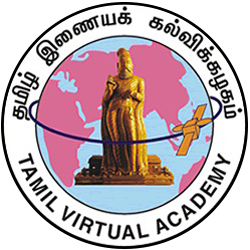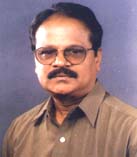Primary tabs
-
LESSON - 2
p10242 Folk Plays (Therukoothu)
This lesson is all about folk plays - - - their origin, growth,
the performing artistes how these plays became a part of
temple rituals and the future of these folk plays.
Folk plays are a form of ancient Tamil art. We have the
Yakshagaanam in Karnataka and Kathakali in Kerala. In Tamil
nadu, folk drama is very old. In ancient Tamil works, there
are many words connected with “Koothu”. There are
references to Koothu in commentaries and inscriptions. When
koothu was performed in the streets for the benefit of the
common people, it was called Therukkoothu.
Folk plays survive today, only because they have become
part of temple rituals. They serve to instill belief in God in
the minds of the people, as well as to unify and entertain
them. Stories from the Mahabharathaa which people are
familiar with, are usually taken as themes for the folk plays.
Folk plays in general, have not been printed. The themes
of these plays can be classified as mythological, historical,
ethnic and modern. Usually these folk plays portray the
conflict between good and evil, with good being rewarded
and evil being punished in the end.
Folk plays are characterized by their typical stage
structure, lighting, music, artistes’ make - up, dance, dialogues,
acting etc. Except for their facial make-up, most of the other
items of ornamentation are made of light wood and materials
that are easily available. These plays have no division of
acts and scenes.
Long ago, there were professional Koothu artistes who
were quite popular. But today, with the domination of
television, and the consequent decline of folk arts,
professional Koothu artistes have almost vanished. Concerted
efforts should be made to revive this ancient form of folk
art, which was once an integral part of Tamil culture.
This lesson teaches you all about folk plays, their origin,
growth, decline and their future.


